-
Posts
2.049 -
Joined
-
Last visited
-
Days Won
49
Posts posted by Genava55
-
-
-
Have the compatibility issues been resolved?
-
The exceptionally rich chamber grave of Gommern (Sachsen-Anhalt), from the late 3rd century CE. Grave goods include Roman tableware and military belt, gold jewelry, bow, other weaponry, and an embroidered round shield (boss made from a Roman drinking vessel)
The nobleman was buried on Suebian territory, but a clay vessel shows connections to the Chatti tribe in the west. He was probably in war against Rome and/or in Roman military service for some time, and later became an important chieftain or local king. It is also suspected he received diplomatic gifts from the Romans.
The grave also contained a board game, speaking for the strategic mind of the buried man. Depicted are the playing stones and metal fittings of the apparently foldable board, which is now decayed.
-
 2
2
-
 1
1
-
-
7 hours ago, Gurken Khan said:
Your first picture looks like a horse race thingy, which probably wouldn't be fitting for Sparta. Did they have a foot race thingy like in your 2nd pic? Maybe we could do something with that. (Heroes, tecs to improve inf speed...)
The dromos is a running racetrack.
-
 1
1
-
-
4 hours ago, wowgetoffyourcellphone said:
It's essentially the Athenian gymnasium.
Yep and it could be exclusive to the Spartans if the theater is exclusive to the Athenians.
Otherwise there is the dromos of Sparta that could be unique.
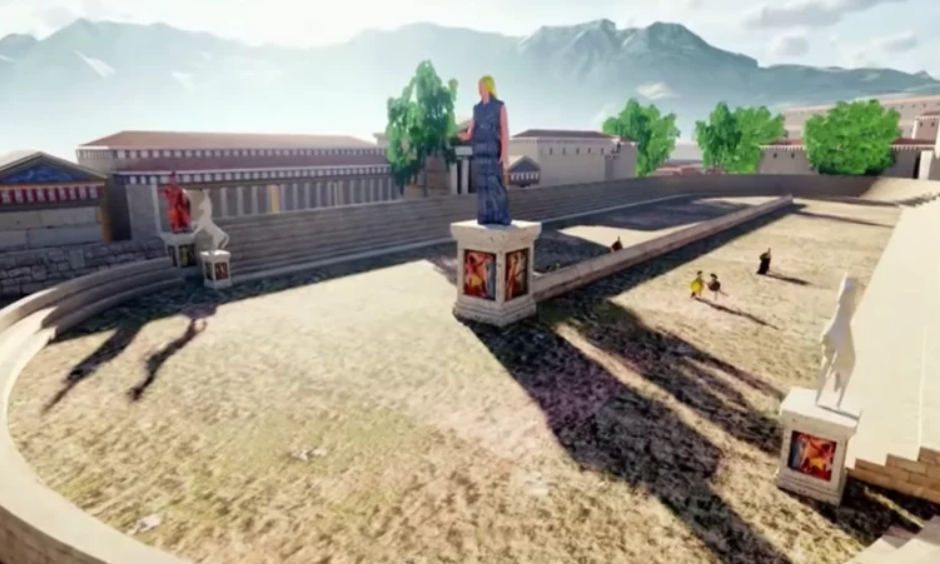
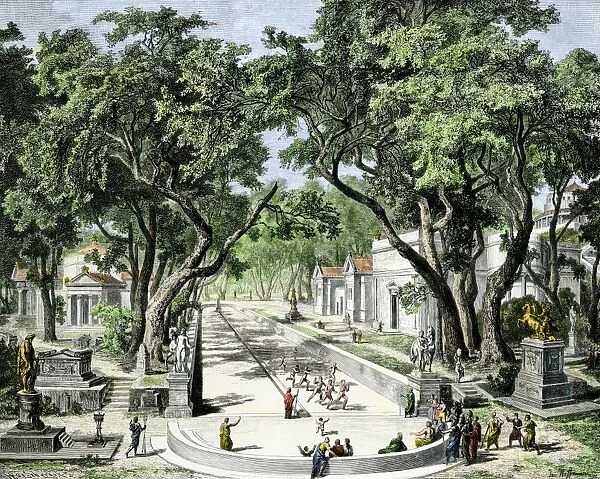
-
On 15/07/2023 at 1:02 PM, Genava55 said:
I think that a Palaestra or a Gymnasion would be more suitable.
_by_Dimitris_Koukoulas,_2013,_Athens_(45180131185).jpg/1280px-Tentative_reconstruction_of_the_palaestra_of_Aristotle%E2%80%99s_Lyceum_(Lykeion)_by_Dimitris_Koukoulas,_2013,_Athens_(45180131185).jpg)
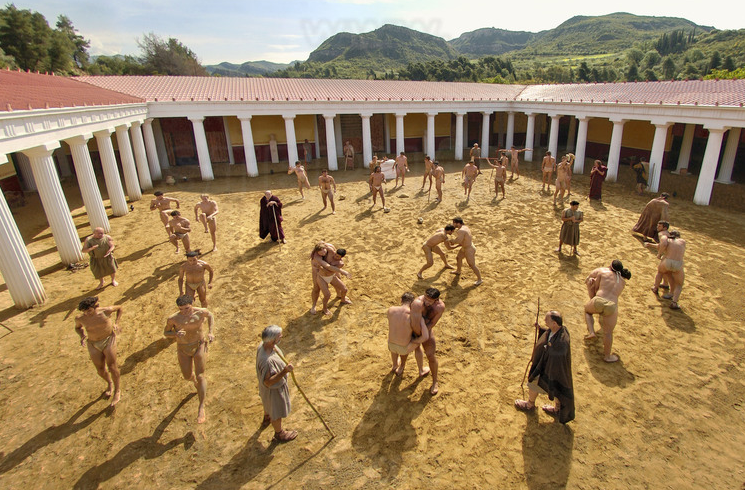
-
@Thorfinn the Shallow Minded do you agree with @wowgetoffyourcellphone about the wooden theatre of Sparta?
-
13 minutes ago, Vantha said:
What unit are you talking about? Which unit in the game is currently called 'Spartan Olympic Hoplite'?
I think those are the champion's upgrade with experience
-
Giving shields to the Samurai cavalry is a bit ugly
-
 3
3
-
-
-
Is there any news on this?
-
2 hours ago, wowgetoffyourcellphone said:
It's so odd that the bow strings of archer units self-illuminate.
Yeah, the design of the game is a bit cartoney, very colorful and very bright features everywhere
-
Close up preview of the units
-
Manor Lords release date => April 2024
-
The Order of the Dragon
-
-
-
4 hours ago, Diablo said:
But yet, we see announcements like "Vulcans!". Just stop adding features and fix the bugs once and for all!
Using Vulcan should drastically increase the performance and reduce the lag.
4 hours ago, Diablo said:Set a list of all bugs, then start working on it.
4 hours ago, Diablo said:And in the mean time, STOP adding stuff!
People making balancing changes and small features are not the same people than those working on the engine and on the core of the game.
-
 6
6
-
-
On 16/10/2023 at 2:13 PM, borg- said:
Thank you for expressing your concern about this and taking some of your time to share your historical knowledge with us.
Well, I believe you misunderstood what I wanted to express. I didn't give you the responsibility to prove it, if it seemed like that, I'm sorry.
Before making the patch, I read some Celtic characteristics and women warriors were there, of course, it's not scientific at all.
I always try to respect the premises of 0 a.d, and perhaps the main one is the historical factor, so if this really cannot be proven,
so I think it should be removed. Well, I'm not a historian, so I won't have enough arguments to debate this, and I don't really want to.
I don't mind that much, I just thought it could be an interesting feature for the gameplay.I think the name "warrior women" might sound bad, so if we choose not to remove that, I think the name could be changed.
Don't worry, I took this as an opportunity to look for more info on the topic. I know you didn't imagine it like that. It's just that if you assert different arguments in a confident manner, you push your interlocutor to respond in depth.
As you can see, the Cimbri are probably the best candidate to have such bonus for their women. Although they are still no warriors, they defended themselves with axes, swords etc. So at least they could have a better weapon in game for fighting.
The Lusitanians could have a sort of women warriors, at least there are two strong evidences that some women could fight as regular troops.
-
 2
2
-
 1
1
-
-
-
On 16/10/2023 at 2:18 PM, borg- said:
Taking advantage of your historical knowledge, I have been working on a patch so that Britis can build towers in neutral territory, the objective here is to bring some gameplay different from other civilizations. The name of the bonus is "great towers". I don't know if this is historically correct, could you help me here please?
There aren't really any towers that the Celts built. This is something that is tolerated for the sake of the gameplay but there is no indication that there were watchtowers or fortified towers in the landscape. On the other hand, the northern Britons built Brochs, Duns and Crannogs.
Jarlshof Broch and Caithness Broch are the inspiration for the current fortress of the Britons. Technically a broch is not a fortress, but a fortified hamlet or a fortified house.
In some cases, the broch is only constituted of a single tower like structure.
I cannot say much for the tower but indeed fortified small buildings were widespread in the landscape. So why not implementing what you propose.
-
 2
2
-
-
Farewell Stanislas. You have been a fantastic leader and your involvement has been remarkable. We will miss you, but I understand your decision. I wish you the best and don't hesitate to come back to say hello on the forum.
-
 6
6
-
-
I will continue my answer later this evening (because it takes time to have a proper argument)
-
A recent revision proposed by @borg- is under review and its goal is to provide an upgrade of the female citizen, for the Gauls and Britons, to a female warrior.
The description of the revision is the following:
QuoteCeltic women were famous for their ferocity and aggressiveness against enemies and it was common for them to fight alongside men in battles, especially if the battle had been lost, the women being a strong last line of defense.
I expressed my concern about the revision, due to the absence of evidence provided. The phrasing above is also very bold and very affirmative, which is bothering to me.
@borg- answered with this message:
QuoteWomen warriors, or those who fought on certain occasions, were not uncommon, especially within the reality of the Celtic world. It does not mean that all women were excellent warriors, just as the logic of war, in itself, never guaranteed the complete adherence of men. Those who had the necessary training for such a feat fought and in the case of the Celts, many women were trained, had weapons, trained others to fight and fought, side by side, men against invaders. The objective of the patch is precisely this, to bring women who are a little stronger, but who cannot win fights alone or play a big role in fighting.
Well, I don't know if there should be a scientific article for this, but I think it's difficult to find this as much as it is to find the counter argument, that women couldn't fight.
I have several issues with this answer and I will challenge different aspects he mentioned.
From his answer, I see the following key-points:
- In Celtic societies, women warriors were not uncommon.
- Many women in Celtic societies were trained to fight.
- The patch is made to bring women as a last line of defense.
- @borg-does not provide evidence, does not know any reference supporting the claim and says the counter argument, which he phrased as "women couldn't fight", is as difficult to prove.
I will start with the point n°4 because I think this is an important issue and I think @borg- need to understand the problem with this kind of attitude.
What you are doing @borg- is shifting the burden of proof to me while you are the one making a claim and you are following a fallacious reasoning known as the argument from ignorance. Furthermore, you are expressing another fallacy known as the strawman argument, by saying the counter-argument is to prove that women couldn't fight.
The issue is not to know if women could or not fight. I will say it directly, all women could fight, whatever they are Celtic, Roman, Greek etc. My issue is that you are making a patch that would enable the possibility to upgrade all women as warriors for the Celtic civs. By asking to prove that women couldn't fight, you are asking for an impossible challenge which is irrelevant to your claim.
And the problem I have with this attitude is that it is disrespectful to others in a debate. I know you didn't mean to be disrespectful, I don't think it was intentional on your part. But I want you to understand that despite everything, this is not a healthy attitude. Remember Brandolini's law and consider the time I am taking to answer here.
Now let's start with points n°1 and 2. By saying the women warriors were not uncommon in Celtic societies, you are saying this was not rare and not exceptional. As if it was something the Celts were used to see in their societies, even if it was not the majority. The same about the training of women, if they were many.
By looking at my favorites books I use as references, I don't find any support to this claim. For example in The Celtic World edited by Miranda Green, it deals a lot about the women, it mentions the quotes from the Romans about their aggressiveness and stature, it mentions that we know several burials of wealthy women suggesting they had access to political power etc. but at no point it is written or even suggested that the women fought as warriors or were trained to use weapons. The Celtic World is a massive book of 800 pages with 40 contributors, all historians or archaeologists. Yet it is not mentioned. In Barry Cunliffe's 2nd edition of The Ancient Celts, he doesn't mention any evidence for female warriors, females fighting on the battlefield or females training with weapons. Quite the contrary, he mentions that during the Galatian raids, the people following Leonorios and Lutorios were mentioned by the classical authors as being constituted of 20'000 persons from which half were non-combatants, because those were the children, the elders and the women. He also mentions that during the last battle of Boudica's revolt, the bagage train and the chariots were uphill and the women and children stayed with the bagage train to have a good view on the battlefield. I have the same struggle to find any reference about female warriors in the literature written in French (books written by Jean-Louis Brunaux, Venceslas Kruta, Luc Baray etc.).
In the commentaries of the Gallic Wars written by Caesar, there is no mention of any fight including women, or only as passive victims. So I am really sure of myself when I am saying there is no mention of female warriors.
The only mention of the aggressiveness of the women is from Ammianus Marcellinus (4th century AD):
Quote15. 11. 18. From this point also, the Rhone, being now enriched by other rivers, becomes navigable for large vessels, which are often tossed about in it by gales of wind; and at last, having finished the course which nature has marked out for it, foaming on it joins the Gallic Sea in the wide gulf which they call the Gulf of Lyons, about eighteen miles from Arles. This is enough to say of the situation of the province; I will now proceed to describe the appearance and character of the inhabitants.
15. 12. 1. Nearly all the Gauls are of a lofty stature, fair, and of ruddy complexion; terrible from the sternness of their eyes, very quarrelsome, and of great pride and insolence. A whole troop of foreigners would not be able to withstand a single Gaul if he called his wife to his assistance, who is usually very strong, and with blue eyes; especially when, swelling her neck, gnashing her teeth, and brandishing her sallow arms of enormous size, she begins to strike blows mingled with kicks, as if they were so many missiles sent from the string of a catapult.
15. 12. 2. The voices of the generality are formidable and threatening, whether they are in good humour or angry: they are all exceedingly careful of cleanliness and neatness, nor in all the country, and most especially in Aquitania, could any man or woman, however poor, be seen either dirty or ragged.
15. 12. 3. The men of every age are equally inclined to war, and the old man and the man in the prime of life answer with equal zeal the call to arms, their bodies being hardened by their cold weather and by constant exercise, so that they are all inclined to despise dangers and terrors. Nor has any one of this nation ever mutilated his thumb from fear of the toils of war, as men have done in Italy, whom in their district are called Murci.
15. 12. 4. The nation is fond of wine, and of several kinds of liquor which resemble wine. And many individuals of the lower orders, whose senses have become impaired by continual intoxication, which the apophthegm of Cato defined to be a kind of voluntary madness, run about in all directions at random; so that there appears to be some point in that saying which is found in Cicero’s oration in defence of Fonteius, “that henceforth the Gauls will drink their wine less strong than formerly,” because forsooth they thought there was poison in it.
15. 12. 5. These countries, and especially such parts of them as border on Italy, fell gradually under the dominion of the Romans without much trouble to their conquerors, having been first attacked by Fulvius, afterwards weakened in many trifling combats by Sextius, and at last entirely subdued by Fabius Maximus; who gained an additional surname from the complete accomplishment of this task, after he had brought into subjection the fierce tribe of the Allobroges.
15. 12. 6. Cæsar finally subdued all the Gauls, except where their country was absolutely inaccessible from its morasses, as we learn from Sallust, after a war of ten years, in which both nations suffered many disasters; and at last he united them to us in eternal alliance by formal treaties. I have digressed further than I had intended, but now I will return to my original subject.
Ammianus Marcellinus is not a contemporary of the description he is writing. It is obvious he is mixing different references, notably from Diodorus Siculus, Strabo and Caesar. Although the whole account about the women is unique and does not exist in the original sources, it is also heavily exaggerated and scatty. But even in this account, it doesn't say the women use weapons to defend themselves or their husband. Quite the contrary, the animal strength of the women is compared to catapults.
So in conclusion, the evidence concerning directly the Celts are lacking. Let's see what is said about their neighbors.
There is one interesting account during the Cimbrian invasion, at the Battle of Vercellae, when the Romans defeated the Cimbri, Ambrones and Teutones.
QuoteThe greatest number and the best fighters of the enemy were cut to pieces on the spot; for to prevent their ranks from being broken, those who fought in front were bound fast to one another with long chains which were passed through their belts. The fugitives, however, were driven back to their entrenchments, where the Romans beheld a most tragic spectacle. The women, in black garments, stood at the waggons and slew the fugitives — their husbands or brothers or fathers, then strangled their little children and cast them beneath the wheels of the waggons or the feet of the cattle, and then cut their own throats. It is said that one woman hung dangling from the tip of a waggon-pole, with her children tied to either ankle; while the men, for lack of trees, fastened themselves by the neck to the horns of the cattle, or to their legs, then plied the goad, and were dragged or trampled to death as the cattle dashed away. Nevertheless, in spite of such self-destruction, more than sixty thousand were taken prisoners; and those who fell were said to have been twice that number.
- Plutarch, Life of Marius, 27
Plutarch also mentioned the women at the battle of Aquae Sextiae against the Ambrones:
QuoteWell, then, the Ambrones became separated by the stream; for they did not all succeed in getting across and forming an array, but upon the foremost of them the Ligurians at once fell with a rush, and the fighting was hand-to‑hand. Then the Romans came to the aid of the Ligurians, and charging down from the heights upon the Barbarians overwhelmed and turned them back. Most of the Ambrones were cut down there in the stream where they were all crowded together, and the river was filled with their blood and their dead bodies; the rest, after the Romans had crossed, did not dare to face about, and the Romans kept slaying them until they came in their flight to their camp and waggons. Here the women met them, swords and axes in their hands, and with hideous shrieks of rage tried to drive back fugitives and pursuers alike, the fugitives as traitors, and the pursuers as foes; they mixed themselves up with the combatants, with bare hands tore away the shields of the Romans or grasped their swords, and endured wounds and mutilations, their fierce spirits unvanquished to the end. So, then, as we are told, the battle at the river was brought on by accident rather than by the intention of the commander.
- Plutarch, Life of Marius, 19
Strabo also mentions the role of women before and during the battlefield among the Cimbri:
QuoteWriters report a custom of the Cimbri to this effect: Their wives, who would accompany them on their expeditions, were attended by priestesses who were seers; these were grey-haired, clad in white, with flaxen cloaks fastened on with clasps, girt with girdles of bronze, and bare-footed; now sword in hand these priestesses would meet with the prisoners of war throughout the camp, and having first crowned them with wreaths would lead them to a brazen vessel of about twenty amphorae; and they had a raised platform which the priestess would mount, and then, bending over the kettle, would cut the throat of each prisoner after he had been lifted up; and from the blood that poured forth into the vessel some of the priestesses would draw a prophecy, while still others would split open the body and from an inspection of the entrails would utter a prophecy of victory for their own people; and during the battles they would beat on the hides that were stretched over the wicker-bodies of the wagons and in this way produce an unearthly noise.
Plutarch and Strabo are considered as reliable enough in general. I will now show you the account by Orosius, a Christian priest of the 5th century AD, generally considered as unreliable [he is also dub enough to confuse the Cimbri as Gauls]:
QuoteThe Teutones and Cimbri, however, passed over the snows of the Alps with forces intact and swept across the plains of Italy. These hardy peoples became effeminate there under the influence of a milder climate and of an abundance of drink, food, and baths. Catulus and Marius, who was consul for the fifth time, were dispatched against them. Following Hannibal's clever plan of selecting not only the day for battle but also the field, the consuls arranged their battle line under the cover of a mist but later fought the battle in the sun. The first sign of disorder arose on the side of the Gauls, because they realized that the Roman line of battle had already been drawn up ready for action before they came on the field. In the battle, wounded cavalrymen, driven backward upon their own men, threw into confusion the entire force that was advancing to the battlefield in irregular formation. The sun, too, was shining brightly in their faces and at the same time a wind arose. As a result, dust filled their eyes and the brilliant sun dimmed their sight. Under these conditions the casualties suffered were so terrible that only a few survived the disaster, whereas the losses of the Romans were very slight. A hundred and forty thousand, according to report, were slain in that battle, while sixty thousand were captured.
The women provoked a battle that was, if anything, more severe. Surrounded by their wagons drawn up in the form of a camp, they defended themselves from their higher position and held the Romans at bay for a long time. They finally became terrified by a new method employed by the Romans in killing enemies. The Romans scalped the women and left them in an unsightly condition from their shameful wounds. The women now turned the sword, which they had taken up against the enemy, against themselves and against their own children. Some cut each other's throats; others tied cords to the legs of horses and then placing around their own necks these same cords with which they had tied the horses, they goaded their horses on, and were thus dragged along and choked to death; others hanged themselves with nooses suspended from the wagon poles which had been raised high in the air. One woman indeed was found who first had slipped nooses over the necks of her two sons and then had bound the ropes to her own feet. When she cast herself off to meet her own death by hanging, she carried her sons along with her to destruction.
Among these many wretched forms of death, it is reported that two chieftains rushed upon each other with drawn swords. The kings Lugius and Boiorix fell on the battlefield; Claodicus and Caesorix were captured. In these two battles three hundred and forty thousand Gauls were slain, and one hundred and forty thousand were captured. This does not include the countless number of women who, in a fit of feminine frenzy but with manly strength, put themselves and their little children to death.
@borg- this is an interesting case where the women weren't trained as warriors, didn't fight in the battlefield but could have been aggressive after the defeat of their men. Just an example of a different interpretation from the aggressiveness described by the classical authors.
If you want a real account describing women carrying arms and fighting, there is one by Appian. He describes the wars in Lusitania against Viriathus:
Quote[71] Emulating the example of Viriathus, many other guerilla bands made incursions into Lusitania and ravaged it. Sextus Junius Brutus, who was sent against them, despaired of following them through the extensive country bounded by the navigable rivers Tagus, Lethe, Durius, and Baetis, because he considered it extremely difficult to overtake them while flying from place to place after the manner of robbers, and yet disgraceful not to do so, and a task not very glorious even if he should conquer them. He therefore turned against their towns, thinking that thus he should take vengeance on them, and at the same time secure a quantity of plunder for his army, and that the robbers would scatter, each to his own place, when their homes were threatened. With this design he began destroying everything that came in his way. Here he found the women fighting and perishing in company with the men with such bravery that they uttered no cry even in the midst of slaughter. Some of the inhabitants fled to the mountains with what they could carry, and to these, when they asked pardon, Brutus granted it, taking their goods as a fine.
[72] He then crossed the river Durius, carrying war far and wide and taking hostages from those who surrendered, until he came to the river Lethe, being the first of the Romans to think of crossing that stream. Passing over this he advanced to another river called the Nimis, where he attacked the Bracari because they had plundered his provision train. They were a very warlike people, the women bearing arms with the men, who fought never turning, never showing their backs, or uttering a cry. Of the women who were captured some killed themselves, others slew their children with their own hands, considering death preferable to captivity. There were some towns that surrendered to Brutus and soon afterwards revolted. These he reduced to subjection again.
In this case, this is a very explicit account. The kind of evidence which is lacking for the Gauls and the Britons.
( And before reading moldy arguments like saying that the Lusitanians are Celts so it's as if we could extrapolate to all the others, no the Lusitanians are no Celts: https://academic.oup.com/book/36477/chapter/321084624 )
The women of Salmantica, a city of the Vaccaei, they set a trap and hid weapons in order to protect the city against Hannibal, they fought against his soldiers.
QuoteWhen Hannibal, the son of Barca, besieged the great city Salmantica in Spain, before he fought against the Romans, at the first assault the besieged citizens were surprised with fear, insomuch that they consented to grant him his demands, and to give him three hundred talents of silver and three hundred hostages. Upon which he raised his siege; when they changed their minds, and would not perform any thing that they had promised. Wherefore returning again to his siege, he gave command to his soldiers to take the city by storm, and fall to the plundering their goods. At this the barbarians, struck universally into a panic fear, came to terms of composition, for the free citizens to depart the city with their clothes to their backs, but to leave their weapons, goods, slaves, and city behind them. Now the women supposed that, although the enemies would strictly search every man as he departed, yet the women would go untouched. Accordingly, taking scimitars and hiding them under their coats, they fell in with the men as they marched out. When they were all gone out of the city, Hannibal sets a guard of Masaesylian soldiers, fixing their post without the gate, but the rest of his army fell promiscuously into the city to plunder. But the Masaesylians, seeing them busy in carrying away much spoil, were not able any longer to refrain or to mind the charge of their watch, taking it heinously that that was their lot, and therefore left their post and went to take their share of the booty. Upon this the women raised a shout to animate their husbands, and delivered the scimitars into their hands, and they themselves some of them fell upon the sentinels; insomuch that one of them, snatching away the spear of Banon the interpreter, smote him with it, though he was armed with a breastplate. And as for the rest, the men routed and put some to flight and slew others, making their escape by charging through them in a great body together with the women. Hannibal, being made acquainted with these things, pursued them, and those he took he slew; but some betaking themselves to the mountains easily made their escape, and afterwards, sending in their humble supplications, were admitted by him into the city, obtaining indemnity and civil usage.
- Plutarch, De Mulierum Virtutibus, 10
During the siege of Iliturgi, an Iberian city of Southern Spain (nearby Cordoba), the women helped the men to defend the city by providing ammunition:
Quote[8] The defenders were stimulated to a determined and prolonged resistance not by their general or their chiefs but by the fear which came from a consciousness of guilt. With their past crime in mind they warned each other that the enemy was seeking not victory so much as vengeance. [9] The question was not how to escape from death but where to meet it, whether, sword in hand, on the battlefield where the fortune of war often raises up the vanquished and flings the victor to the ground, or amidst the ashes of their city before the eyes of their captive wives and children after being torn with the lash and subjected to shameful and horrible tortures. With this prospect before them every man who could carry arms took his part in the fighting, and even the women and children working beyond their strength supplied missiles to the combatants, and carried stones up to the walls for those who were strengthening the defences. Not only was their liberty at stake-that motive only inspires the brave-but they had before their eyes the very extremity of torture and a shameful death. [10] As they looked at each other and saw that each was trying to outdo all the rest in toil and danger, their courage was fired, and they offered such a furious resistance that the army which had conquered Spain was again and again repulsed from the walls of one solitary city, and fell back in confusion after a contest which brought it no honour.
- Livy, book 28 ch. 19
Concerning the martial arts, there is a mention of such training through a description of Cynane, half-sister of Alexander the Great and half-Illyrian from her mother Audata :
https://en.wikipedia.org/wiki/Cynane
QuoteCynane: Cynane, the daughter of Philippus, was famous for her military knowledge; she commanded armies, and in the field charged at the head of them. In an engagement with the Illyrians, she herself slew their queen with a fatal blow to the throat; and she defeated the Illyrian army with great slaughter. She married Amyntas, son of Perdiccas; and, losing him soon after, never would take a second husband. By Amyntas she had an only daughter named Eurydice: to whom she gave a military education, and instructed her in the science of war. Upon Alexander's death, his generals parcelled out his dominions among themselves, in exclusion of the royal family. But Cynane crossed the Strymon, forcing her way in the face of Antipater, who disputed her passage over it. She then passed the Hellespont, to meet the Macedonian army, and Alcetas with a powerful force advanced to give her battle. The Macedonians at first paused at the sight of Philippus' daughter, and the sister of Alexander; but after reproaching Alcetas with ingratitude, undaunted at the number of his forces, and his formidable preparations for battle, she bravely advanced to fight against him. She resolved upon a glorious death, rather than, stripped of her dominions, accept a private life, unworthy of the daughter of Philippus.
- Polyaenus, Strategems of War
An example of women defending their cities with their husbands, the Aetolians, a Greek people, who were besieged by the Galatians:
QuoteThe Aetolians got news of the kind of calamity that was on them, and at once they raced back at speed from Thermopylae and concentrated their power into Aetolia. They were furious over the agony of the Callians, but even more gripped by anxiety to preserve cities which had never before in history been captured. From home everyone old enough came out to fight from every city, with the very old mixed among them by necessity and by pride; even the women were willingly serving beside the men, driven by a deeper rage than their husbands against the Gauls. When the barbarians had plundered houses and sanctuaries and set fire to Callion, they turned back the same way, only to come face to face with men from Patras, who were trained regimental infantry and the only Achaeans fighting for Aetolia. This force suffered badly from the numbers and desperation of the Gauls; but the Aetolians and their women waited in place along every road to aim javelins into the barbarians, and as the Gauls had only their traditional shields the javelins seldom missed; when they were chased they escaped and got away without trouble, and returned from the chase to make another vigorous attack.
- Pausanias, Greece, 10.22.3
Otherwise, is there anything in the archaeological record? Yes. There are at least two burials of Celtic women with weapons.
One is the "Rigana of Oleggio". A burial nearby the Lake Maggiore in Northern Italy and dated to the 2nd century BC. A woman was buried in an individual tomb, n°53 of the necropolis, with a complete panoply of weapons and several wares as her grave goods. One of the plate has the writing "Rigana". The term refers to the feminine counterpart of the Latin regulus and of the Celtic rix.
And one is a burial in Bryher/Scilly, recently analyzed genetically and it appeared it was a female: https://www.nbcnews.com/news/world/old-iron-age-female-warrior-scilly-iburial-rcna96595
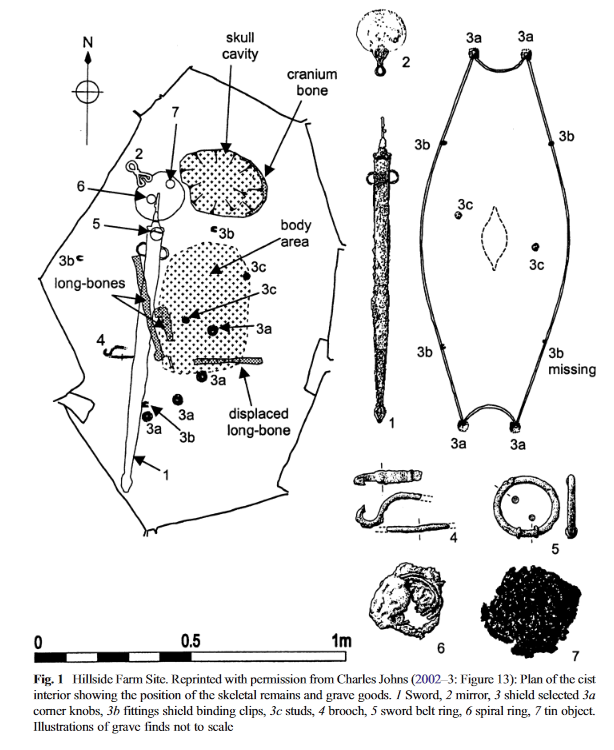
But in both cases, those burials suggest noble women, with a lot of prestige. It is not clear if those were proper warriors or mostly leaders.
-
 1
1


.thumb.jpg.b21ca1d0c15fb56b42c39b25a0a40815.jpg)
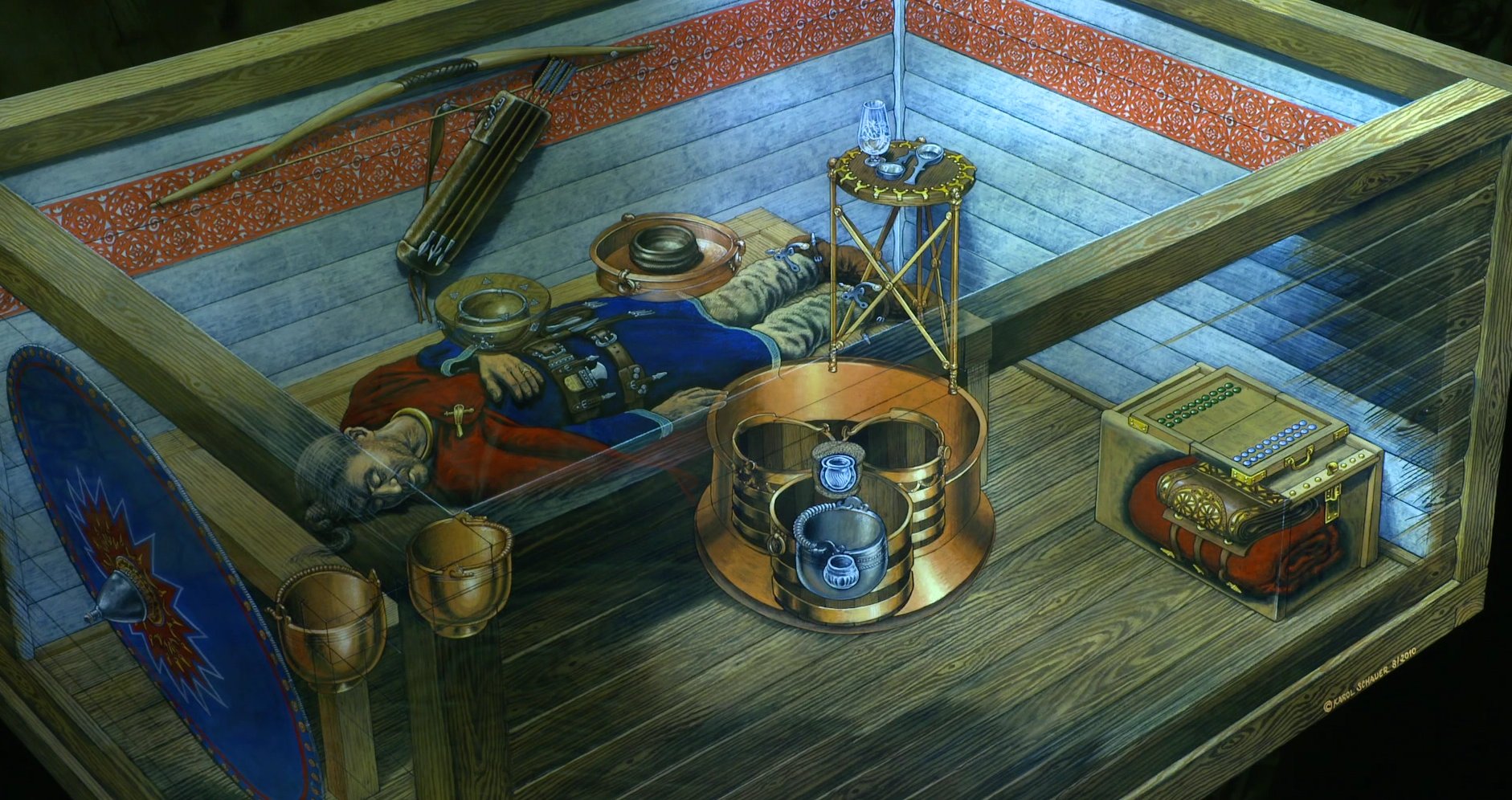

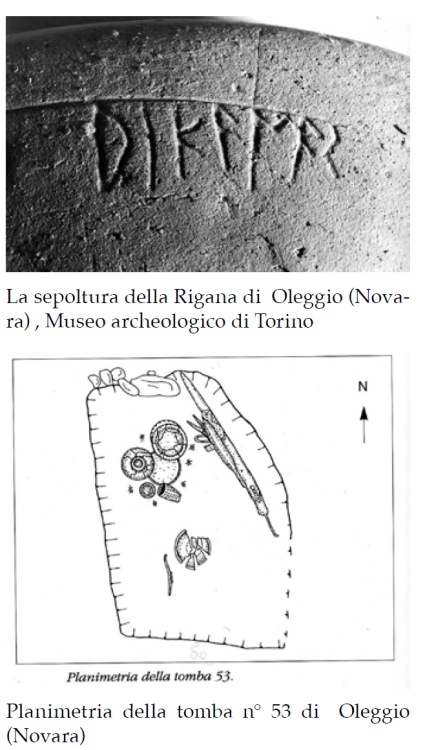
Age of Empires IV
in Introductions & Off-Topic Discussion
Posted